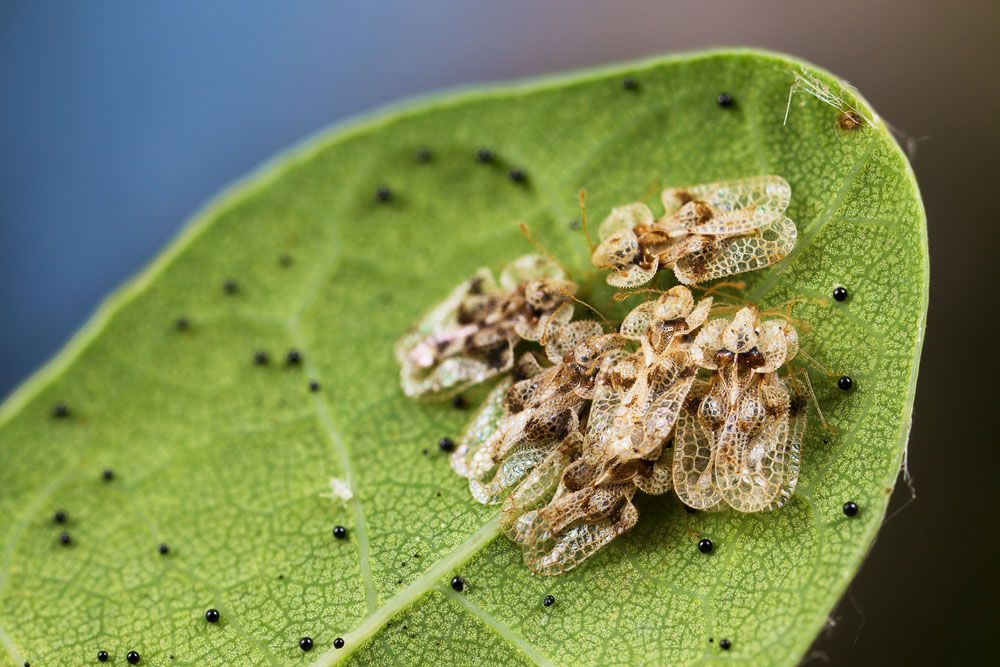
Oak Lace Bug – Corythuca arcuata
Oak Lace Bug (Corythuca arcuata)
Common Name: Oak Lace Bug
Latin Name: Corythuca arcuata
Appearance:
- Adult bugs are distinguished by their lacy, milk-white wings with varied brown patterns (top picture). They may reach a length of 4 mm and have rectangular wings.
- The nymphs are flattened, wingless, black, spiny, oblong, and reach a maximum length of around 2 mm.
- The eggs are oval, brown, and 0.5mm long, with a lighter-colored cover. On the undersides of leaves, they are often clustered along the major veins.
Territory:
Oak Lace Bug most of them are in the US and so. Canada; was recently also introduced to Europe and Turkey.
Damages caused by Oak Lace Bug:
The first indication of damage caused by feeding is the appearance of tiny, yellow spots (above) on the top surfaces of leaves, often clustered along the leaf veins. As damage grows with each successive generation, the yellow spots combine into big yellow and golden regions on the damaged leaves. Heavy infestations cause the leaves to drop prematurely, before the typical autumn leaf drop. Damage to the leaves is noticeable throughout the summer and tends to worsen between July and September.
Life history and habits:
Oak lace bugs are capable of producing two to three generations every year. Adults begin to lay eggs on the undersides of leaves in the spring. The nymphs emerge from their eggs within a few days and pass through five or six instar stages before reaching maturity. A whole life cycle spans between 30 and 40 days, allowing for many generations each year. Lace bugs are more common in late summer and fall, and adults and nymphs eat simultaneously in late summer. A portion of the last generation of adults from each year overwinters in bark cracks and other sheltered areas to lay eggs the following spring.
